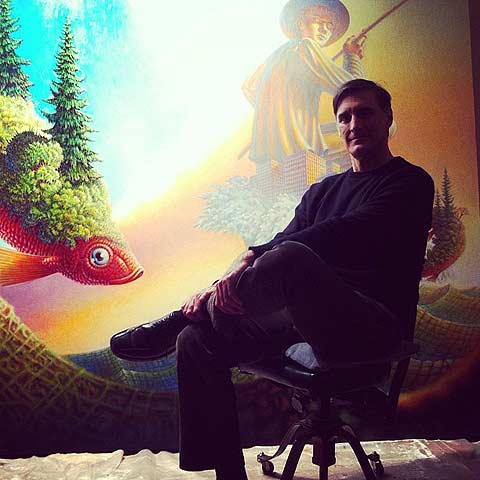About

About Jeff Mihalyo:
Pacific Northwest artist Jeff Mihalyo was born in Massachusetts, raised in Seattle, and attended Otis/Parsons in Los Angeles. His career path has revolved around the media, entertainment, and information design industries for over thirty years. Dreaming up worlds and manifesting content is his specialty. He has been a gun-for-hire for companies such as Microsoft, DreamWorks, Nintendo, RealNetworks, McGraw-Hill, Disney, Jim Henson Studios, Comedy Central, Scholastic, and many others. He was a graphic designer for the 1980’s LA surf and skate scene, as well as for the Seattle “Grunge” era rock venues of the 1990’s. He has experience as a lighting designer, a set designer, and a web designer. His interface designs are award winning, as is his public art. His commercial work has been seen around the world printed on clothing, packaging, and software, as well as appeared on video, film, and television. His theater sets have been on-tour for decades, and since 2015 he has completed several large scale public art restoration projects. His paintings have participated in the Beijing and Santorini Biennales while his Scanography work have been published in Berlin, and exhibited in Moscow. His sold-out solo exhibits related to his travels to Italy, France, Spain, Morocco and China are the culmination of the artist’s interest in art history and the contemporary human condition
Artist Statement:
In his art, Jeff Mihalyo discusses world and philosophical issues through a multifaceted system of symbolic and narrative compositions. Each painting emphasizes a need for balance in order to explore the complexity of the theme. He conveys the need for balance through a poetic arrangement of his subjects and by presenting multiple viewpoints of an issue within the painting’s narrative. This multi-dimensional approach to the portrayal of a “vision” allows each image to behave as an open-ended statement. The setting and characters of each picture can appeal to the viewer’s psychology, inviting one to develop questions about what is depicted and ultimately draw one’s own conclusions about the meaning of the work. The suggested narrative and viewer interpretation is key to the interplay between the artist and his audience